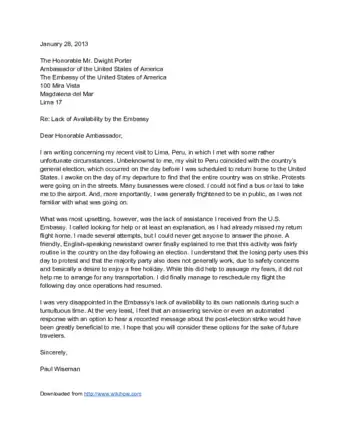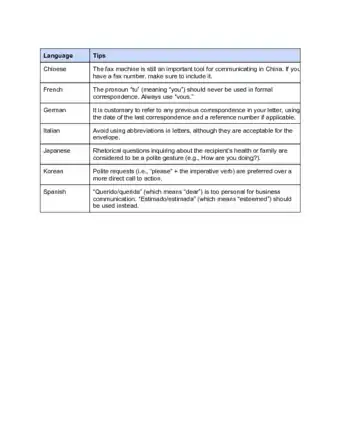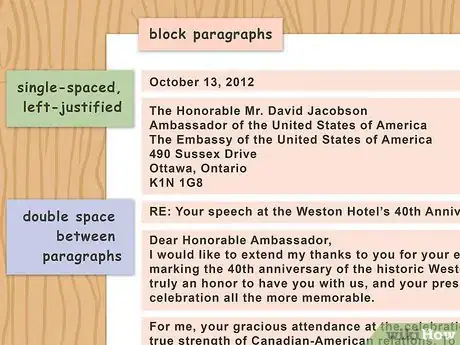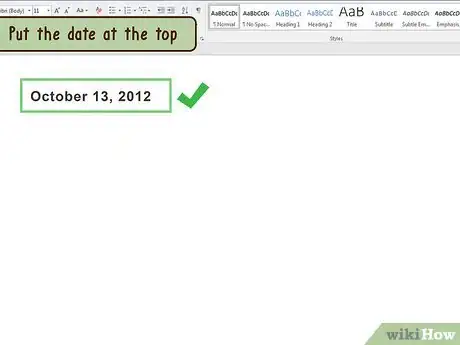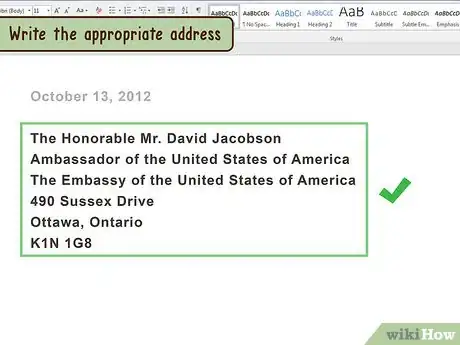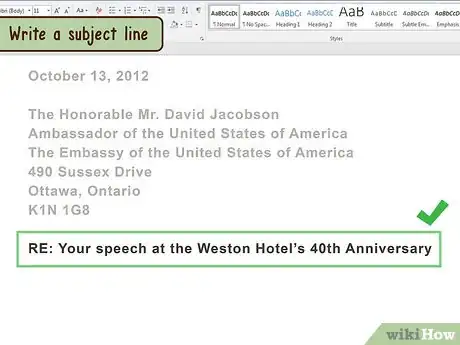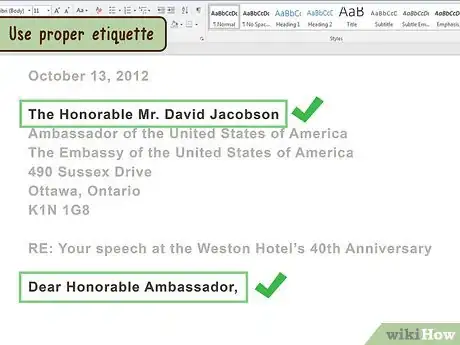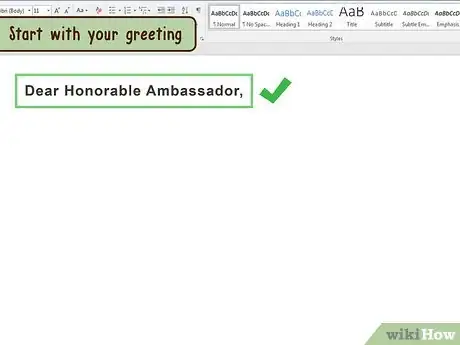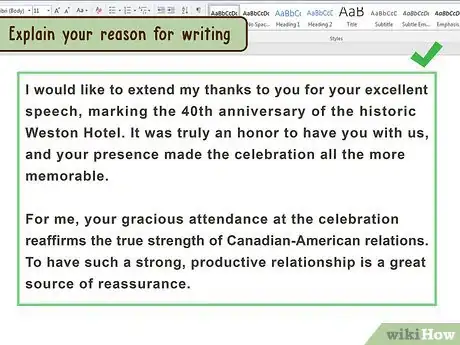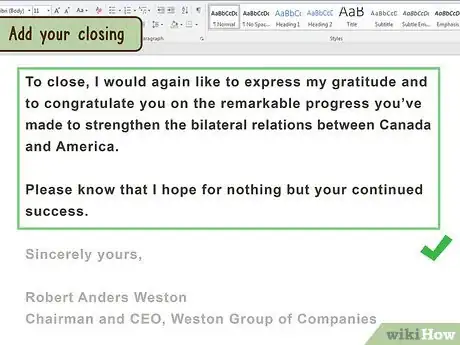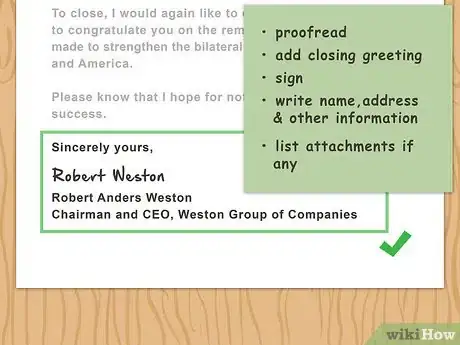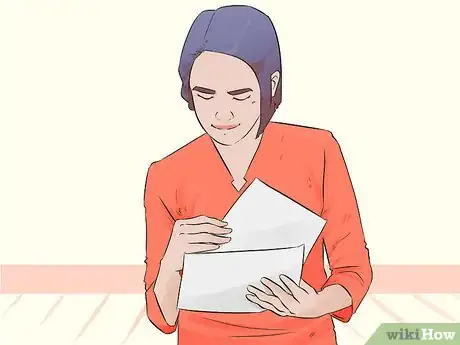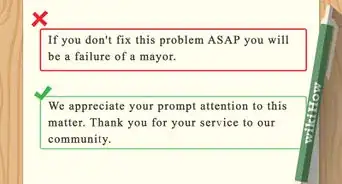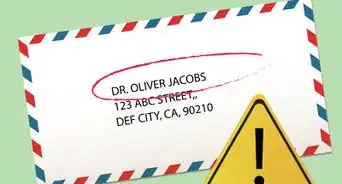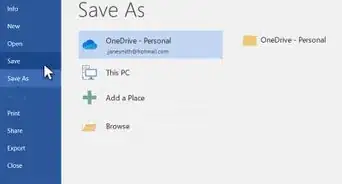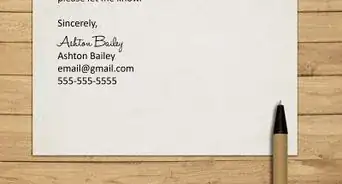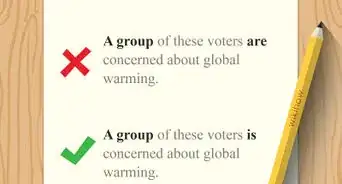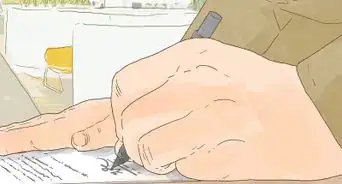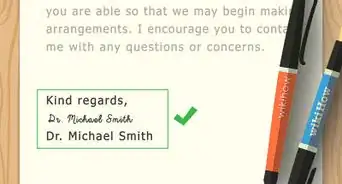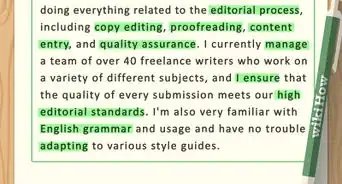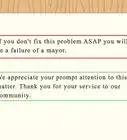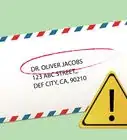This article was co-authored by wikiHow staff writer, Jennifer Mueller, JD. Jennifer Mueller is an in-house legal expert at wikiHow. Jennifer reviews, fact-checks, and evaluates wikiHow's legal content to ensure thoroughness and accuracy. She received her JD from Indiana University Maurer School of Law in 2006.
There are 7 references cited in this article, which can be found at the bottom of the page.
wikiHow marks an article as reader-approved once it receives enough positive feedback. This article has 13 testimonials from our readers, earning it our reader-approved status.
This article has been viewed 2,364,651 times.
Learn more...
An embassy is the official office of one country's ambassador in another country. The ambassador is the official representative of their country. Both embassies and consulates handle the affairs of one country while in another country. If you wish to address the ambassador or another member of the embassy or consular staff, you must write a formal letter. This letter should include your personal details, requests and reasons for writing, and formal salutations, or you may not get a response. How you address a letter to an embassy depends on the country and particular individual to which you are writing.[1]
Steps
Letter Help
Formatting Your Letter
-
1Type your letter on a computer. Handwritten letters are hard to read, and may not get any response. If you want your letter to be read and taken seriously, it's important to type it neatly using a recognized business letter format.
- Use a standard word-processing application, even if you plan to deliver the letter using email. It typically is better to send an attachment than to write your letter in the body of an email. However, you should probably check with the embassy first to see what is preferred.
- Most word-processing applications have a template that you can use to create a business letter. These templates typically will set your margins and paragraph styles for you.
- Use a standard, readable font such as Times New Roman or Helvetica, in a 12-point size. Do not use script fonts.
-
2Search for templates. In most cases, you'll be writing to the embassy regarding an immigration issue – either on your own behalf or for a friend or family member. There are a number of immigration assistance websites that have letter templates for various issues.[2]
- These templates give you suggested language to use so you can more easily write and address your letter. Don't copy them verbatim, though. Read them carefully and make sure the suggested language suits your situation. If any of it doesn't apply, don't include it.
- Look into the background of the website before you use their suggested language. Most of these websites have an "about" page where you can find out who is in charge of the website. Make sure it's an individual or organization you can trust.
Advertisement -
3Use block paragraphs. Traditional business letters are written in single-spaced, left-justified paragraphs with a double space between paragraphs. Using a double-space means you don't have to indent the first line of each paragraph.[3]
- If you're writing in a language that is read from right to left, such as Arabic or Hebrew, your paragraphs would be right-justified.
-
4Put the date at the top. The first line that you type will be the date that you are sending the letter. Your word-processing program may automatically insert the date if you're using a template.[4] If you don't plan on mailing your letter for a few days, you'll need to adjust this date to reflect the date of mailing.
- Generally, you shouldn't worry if you end up being a day off. For example, you could finish your letter intending to mail it that day, but not make it to the post office until after the close of business. That would mean you'd have to mail your letter the next day, but you wouldn't have to print up a new letter with the different date.
- However, while delaying a day or two is fine, if you end up not being able to mail the letter for a week or longer, you probably want to print a fresh copy with an adjusted date. Your reader will expect the date on the letter to be identical or close to the date of the postmark.
-
5Find the appropriate address. The top of your letter will include an area for you to write your own name and address, then the name and address of the person to whom you're writing. Call the embassy or check its website to learn the address to which you should mail your letter.[5]
- Keep in mind that many larger embassies will have different addresses for you to use depending on the reason for your letter.
- If you don't already know, you'll also need to find out the correct person to address who can help you with your issue. Internet sites, such as Project Visa or Embassy World, as well as Internet searches for the country and the word "embassy" can help you identify the right person. You also can call the embassy directly to identify the best contact.
- Type the name of the person you are addressing, the name of the embassy and the address of the embassy to which you are writing. Write this in the same format as you would write it on an envelope for mailing.
- For example, if you're writing to an embassy staff member at the Canadian embassy, you would write "Mr. Potter, Canadian Embassy" on the first line of the address block, followed by the physical address. If Mr. Potter is the ambassador, you would write "The Honorable Mr. Potter, Ambassador of Canada, Canadian Embassy." Note that for many countries the correct title for an ambassador is "Excellency," as in "His Excellency Mr. Potter, Ambassador of Canada, Canadian Embassy."
-
6Write a subject line. Following the addresses, include a line that lets the recipient of your letter know why you are writing and what the letter is about. You don't have to include your name in the subject line, and it doesn't have to be a full sentence.[6]
- For example, you might write "Request for tourist visa for parents" or "Invitation to French Consulate party."
- If you're writing in English, the subject line typically is preceded by the letters "RE," a Latin abbreviation that essentially means "regarding."
- Your subject line enables the person who receives your letter to direct it to the right member of embassy staff, in the event that you've sent it to the wrong person. With a subject line, they can do this quickly without having to read the whole letter. For this reason, a subject line is particularly important if you haven't been able to identify a specific person.
Writing Your Letter
-
1Research the etiquette used in the country to which you are writing. Different countries have their own formalities and diplomatic protocol for addressing ambassadors and other members of embassy staff.[7]
- You may be able to find this information on the embassy's website, or by doing a quick internet search using the country's name with words such as "etiquette," "diplomatic protocol" or "forms of address."
- Keep in mind that in countries that have a monarchy and recognize nobility, there may be nobles who serve as ambassadors or in other embassy positions. These titles may supersede any general title for members of embassy staff.
- Your letter should be written in a formal tone, using the utmost in politeness and courtesy. If you're writing in a language that has a formal "you," such as French or Spanish, you should use that.
- Pay careful attention when writing to the ambassador specifically, as the title differs depending on whether you are a citizen of the country for which the individual is serving as an ambassador. If you are a citizen of the same country as the ambassador, you may address them as "The Honorable." However, if you are a citizen of a different country, you typically must call them "Her [or His] Excellency," following diplomatic custom.[8] Make sure you have the correct gender – don't just assume based on the name.
-
2Start with your greeting. After you've finished the address blocks and subject line of your letter, you're ready to begin the letter itself. Use a formal greeting and address the person to whom you're writing by their full title.[9]
- To address the person correctly, you'll need to follow the correct etiquette or diplomatic protocol based on your research.
- If you're addressing the consul general or any other embassy employee, you'll generally use their full name. For example, you might write "Dear Mr. Potter." However, pay attention to any other titles the person might have, such as if they are a member of the nobility or have a doctorate.
- Use "Dear Honorable Ambassador" if you are addressing the ambassador directly.
- If you don't know the name or gender of the person to whom you're writing, you can begin your letter "Dear Sir or Madam." However, you should make every effort to address your letter to a specific person. If you get the wrong person, it can always be rerouted.
- Follow the greeting with the punctuation customary in the embassy's country. In some, a comma is appropriate, while others follow the greeting with a colon.
-
3Introduce yourself. Double-space after your greeting and begin your letter by letting the receiver know who you are. Include any identification information necessary, such as any application numbers or reference numbers that are related to the subject of your letter.[10]
- The first sentence should state your name and your country of citizenship. Follow that with any additional identification information that is relevant to your reason for writing.
- Follow the first sentence with a brief description of your reason for writing. This should be no longer than a sentence or two.
-
4Explain your reason for writing. In the remaining paragraphs of your letter, you will elaborate on the background of your case, including any information the recipient will need to properly respond to your letter.[11]
- The length of your letter, and the contents of the remaining paragraphs, will depend on your reason for writing. If you need to give an extended background or timeline of a situation to which you want the ambassador or another embassy official to respond, this may be lengthy.
- If you're writing for a procedural reason, such as to request a visitor visa, your letter typically shouldn't be more than three paragraphs long, and shouldn't go for more than a page or two at most.
- Keep your writing clear and concise, and use formal language throughout. If you address the person to whom you're writing anywhere in the body of your letter, use their official title and follow any other rules of etiquette you gleaned from your research.
-
5Add your closing. The final paragraph of your letter typically is only a sentence or two that tells the recipient what action you want them to take in response to your letter. If you expect a response within a certain time frame, it should be mentioned here.[12]
- If you need something specific from the person, state what that is and the timeframe within which you need it. Remember to allow for time for mailing.
- Be careful giving a deadline, particularly if you're writing to the ambassador or a higher-ranking staff member. Instead of making a demand, say something like "Please be advised that I must have the document I requested within one month or I'll not be able to complete my application," or "Please respond by the end of this month so I can meet my deadline."
- Follow that with a sentence thanking the recipient for their time and attention. For example, you might write "I appreciate that you have many demands on your time. Thank you for your prompt attention to this matter."
- If you are unsure whether you sent your letter to the correct person, you may want to include a note to that effect. For example, you might write "If there is someone else at the embassy better capable of handling my issue, I ask that you kindly forward this letter to them."
Sending Your Letter
-
1Finalize your letter. When you've finished writing your letter, proofread it carefully and correct any typographical errors and mistakes in grammar or punctuation. You may want to read your letter out loud to make sure it reads easily.[13]
- End your letter with a closing greeting such as "Sincerely yours," and leave a few blank lines for your signature. Below that, type your name and address, along with any other identification or contact information you think is necessary, such as your phone number or email address.
- If you're including any other documents with your letter, list them at the bottom of your letter so the reader knows what attachments to expect. You also can use this list as a checklist for yourself to make sure you've included everything necessary.
- Print your final letter and sign it using a pen with blue or black ink. Check the date on your letter before you send it and make sure you don't need to adjust it forward.
- When you've signed your letter, make a copy of the signed letter for your own records.
-
2Gather any attachments. If there are any additional documents that you need to include with your letter, make copies of them.[14] Find out if you are expected to send originals or if copies will suffice. If you must send originals, make a copy for your own records before you send the document.
- If you're sending original documents, it's generally best to use a larger manilla envelope that will allow you to mail them without folding them.
- For copies, use a standard letter-sized envelope unless you have more than three or four sheets, in which case it's generally better to use a larger manilla envelope and leave them flat rather than folding them.
- Mark each copy or document carefully in case they get separated from each other.
-
3Mail your letter. Once you have everything in an envelope, you'll need to make a trip to the post office to ensure you have correct postage on the letter and have formatted the address correctly, particularly if you are mailing it to a foreign country.
- Include your name and the return address on the envelope. This will be written either on the back of the envelope or on the upper-right-hand corner, depending on the country's custom.
- The name and address of your recipient should be written in the middle or lower-right portion of the envelope, again depending on the country's custom. Use the recipient's formal title if applicable.
- You may want to wait until you get to the post office to address your envelope, or research formatting ahead of time.
- If you're handwriting the addresses on the envelope, use a ballpoint pen so the ink won't smear, and print carefully or write in all caps. Don't write in cursive or script on the envelope, as it is difficult to read.
Community Q&A
-
QuestionHow do I write a letter to an embassy to close my passport file?
 Community AnswerIf you wish to surrender your passport, you typically can do this through your local passport or immigration office. They will have a form for you to complete, but you generally shouldn't have to write a letter to an embassy for this.
Community AnswerIf you wish to surrender your passport, you typically can do this through your local passport or immigration office. They will have a form for you to complete, but you generally shouldn't have to write a letter to an embassy for this. -
QuestionHow do you write a letter to the embassy for a death certificate?
 Community AnswerConsular vital records typically are handled specifically by the consular vital records office, and may require a fee. There may be a specific form for you to fill out, which may be more efficient than writing a letter. Call the consulate's office or check their website.
Community AnswerConsular vital records typically are handled specifically by the consular vital records office, and may require a fee. There may be a specific form for you to fill out, which may be more efficient than writing a letter. Call the consulate's office or check their website. -
QuestionI wrote to the Indian embassy about getting a medical report and still have not received anything. What do I need to do next?
 Community AnswerIf you have not received a response to your letter and sufficient time has passed, contact the embassy to follow up. Make sure you have any necessary information about your case, such as any identification numbers.
Community AnswerIf you have not received a response to your letter and sufficient time has passed, contact the embassy to follow up. Make sure you have any necessary information about your case, such as any identification numbers.
References
- ↑ https://inkforall.com/copy-editing/formal-letter/how-to-address-ambassador-in-formal-letter/
- ↑ https://ung.edu/military-college-admissions/_uploads/files/permission-to-participate.pdf
- ↑ https://rasmussen.libanswers.com/faq/33178
- ↑ https://ung.edu/military-college-admissions/_uploads/files/permission-to-participate.pdf
- ↑ http://www.immihelp.com/visitor-visa/sample-consulate-letter-visitors-visa.html
- ↑ http://www.immihelp.com/visitor-visa/sample-consulate-letter-visitors-visa.html
- ↑ https://www.formsofaddress.info/consul/
- ↑ https://www.formsofaddress.info/attache-diplomat/
- ↑ http://www.immihelp.com/visitor-visa/sample-consulate-letter-visitors-visa.html
- ↑ http://www.immihelp.com/visitor-visa/sample-consulate-letter-visitors-visa.html
- ↑ https://inkforall.com/copy-editing/formal-letter/how-to-address-ambassador-in-formal-letter/
- ↑ https://inkforall.com/copy-editing/formal-letter/how-to-address-ambassador-in-formal-letter/
- ↑ https://inkforall.com/copy-editing/formal-letter/how-to-address-ambassador-in-formal-letter/
- ↑ https://tt.usembassy.gov/submitting-documents-for-u-s-immigrant-visa-applicants/
About This Article
To address a letter to an embassy, start by putting the date in the top left-hand corner of the page. Then, below the date, include the formal title and name of the person you're addressing at the embassy, followed by the embassy's full address. After the name and address, include a subject line like "RE: Request for tourist visa for parents." Finally, include a formal greeting below the subject line, like "Dear Honorable Ambassador." If you want to learn more, such as how to format your letter, keep reading the article!

